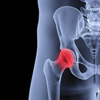What We Treat
Joint Replacements: Hip & Knee

The hip and knee are the main two weight bearing joints of the body. As a result they are prone to the natural wear and tear changes of osteoarthritis.
However, if this wear and tear becomes extensive it can cause a great deal of pain and restrict the joint mobility. At this stage a joint replacement may be considered.
The first hip replacement was done in 1940, and has become increasingly commonplace since the 1960’s. The first knee replacement was done in 1954 and has again become a very routine operation.
The primary reason that any joint replacement is done is for pain relief. Any improvements in mobility resulting from it are always a secondary consideration.

The joint replacement itself has a lifespan and can wear out. This is one reason why they are done mainly in the 65+ age group.
As we become a little older we tend to reduce our general activity. A joint replacement in a patient of around this age should last approximately 20 years.
If it is put into a younger, more active person then it can last as little as 5 years! Redoing a joint replacement can be done, but is not always possible.
In recent years other operative techniques such as the Birmingham Hip Resurfacing and Partial Knee Replacements have been developed with the younger age group in mind (around the 45+ age). These techniques preserve more bone initially and allow for a traditional joint replacement to still be done at a later stage.

A hip replacement is still a major operation, however the surgical technique is so good these days that the vast majority of patients do not require formal post operative physiotherapy providing that the initial post op advice is adhered to.
On occasion ongoing pain or weakness in the gluteal muscles may be experienced and a couple of treatment sessions may be necessary to address this.
Generally knee replacements do require more input post operatively, mainly to reduce swelling and regain movement. Overall a minimum of 90º bend at the knee should be regained in order for the joint to be functional and full extension means walking and standing are more efficient.
Shoulders, elbows, ankles, finger and toe joints can also all be replaced, however these are far less common than hips and knees.



